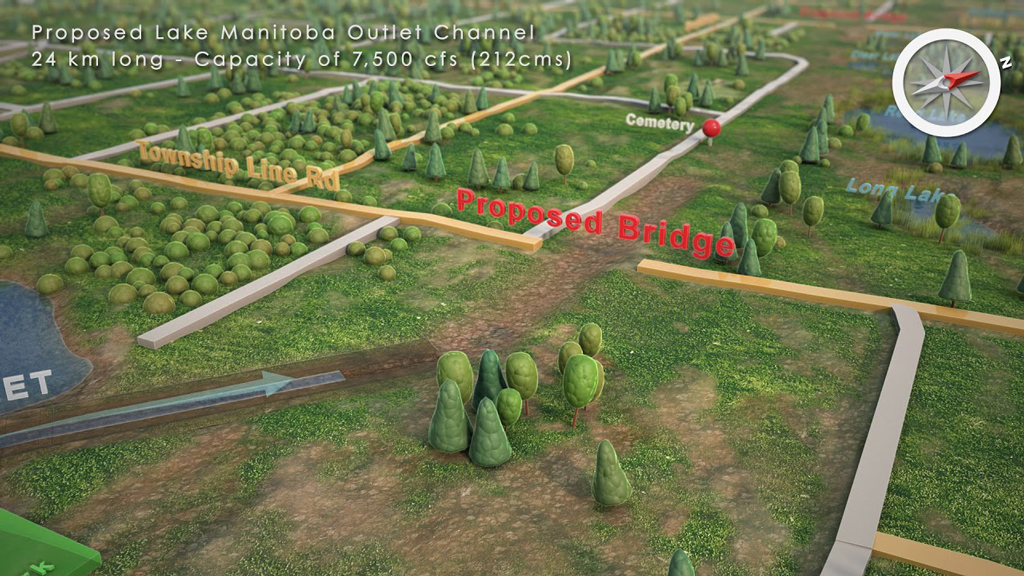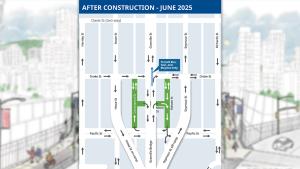Manitoba Transportation and Infrastructure (MTI) is waiting for final environmental approvals to start the massive Lake Manitoba and Lake St. Martin Outlet Channels Project and is working with Indigenous communities and groups to iron out any remaining issues or concerns that have arisen during the process.
The department recently submitted a supplemental information package that contains updated environmental management plans and information to the Impact Assessment Agency of Canada (IAAC) so it can proceed with a technical review of the project. Meanwhile, the project team and MTI leadership have been meeting with Indigenous chiefs and local councils to discuss community-specific concerns.
“The project is currently in phase two of its four-phase Indigenous consultation and engagement process with federal environmental approval processes ongoing,” a provincial spokesperson said in a statement prepared with input from various departments for the Journal of Commerce. “This phase includes communicating with Indigenous groups and other local communities regarding engagement and consultation activities and any issues or concerns raised by the communities during the assessment process so far.
“There will be further consultation and engagement activities required for this project and its components. The Manitoba government has set up mechanisms to support a strong relationship with affected groups.”
Contractors were gearing up for tenders to be issued this past spring. Technical and public information had been submitted to the IAAC in late May, but the agency decided it needed more information about the plan and consultation and engagement process as well as the potential downstream effects of the project, climate resiliency of major components, and whether water quality would be affected. The department sent the supplemental material to the agency in June.
In its latest letter to the IAAC, Cynthia Ritchie, assistant deputy minister infrastructure, capital projects, and Amna Mackin, director, major projects at the MTI, noted “as demonstrated with widespread flooding in Manitoba during the spring of 2022, providing enhanced flood protection and climate resilient infrastructure for Manitobans remains among the highest of priorities for the Government of Manitoba.”
As such, the engagement process has included 257 meetings with 39 Indigenous groups and organizations as well as 1,110 letters and 5,073 emails or phone calls.
“Manitoba is prepared to start construction upon receipt of regulatory approvals and will advertise the first construction packages accordingly,” the provincial spokesperson says.
Planning for the project began in 2011 after extensive flooding forced thousands from their homes. Construction is expected to take three years to complete. The estimated $600-million venture is one of the largest in Manitoba’s history and will employ up to 900 workers during construction. When the project does eventually get the green light, construction contracts will be advertised in a sequenced approach.
The project involves building two diversion channels, each about 23 kilometres long. The Lake Manitoba Outlet Channel will run north from Watchorn Bay on Lake Manitoba to Birch Bay on Lake St. Martin. The Lake St. Martin Outlet Channel will run northeast from Lake St. Martin to Lake Winnipeg south of Willow Point.
The project includes building three bridges, two water control structures, a 24-kilovolt transmission line and adjusting highway infrastructure. It will improve water regulation of Lake Manitoba and Lake St. Martin, reduce the likelihood of flooding and lower the risk of damages and disruption to communities in the area.
Work on an access road started in September 2021 and was substantially complete in March 2022. However, the road was damaged by flooding this past spring and access is currently limited.
Repairs to the road and some additional construction activities have been taking place over the summer. Failed culverts and embankment side slopes are being repaired and deficiencies are being corrected. Cleanup and decommissioning of pits which were a source of roadbuilding materials are being decommissioned.
Manitoba is prone to flooding because of its typography and location. Water flows into Manitoba from the south, east and west before heading north and emptying into Hudson Bay.
The enormity of damage and disruption caused by flood events in 2011 and 2014 have highlighted the need for improved flood protection on Lake Manitoba and Lake St. Martin. An extensive network of flood control infrastructure has been built across the province, but the recent floods exceeded the capacity.
According to the province, the project will provide resiliency as the climate changes and based on current design considerations, it will be able to convey floodwater flows for flood events up to levels of the 2011 flood.
As part of its engagement process with Indigenous communities, Northern Relations Minister Alan Lagimodiere and Transportation and Infrastructure Minister Doyle Piwniuk met with First Nations leaders in August and acknowledged in a joint statement afterwards that the government has fallen short of its responsibilities to collaborate fully in the true spirit and intent of reconciliation and there is much work to do.
“We have been working diligently through the environmental assessment process, recognizing the importance of water, land and resources, and are working to ensure the outlet channels project is aligned with traditional knowledge and Indigenous understanding of the area,” the two ministers said in the statement.











Recent Comments